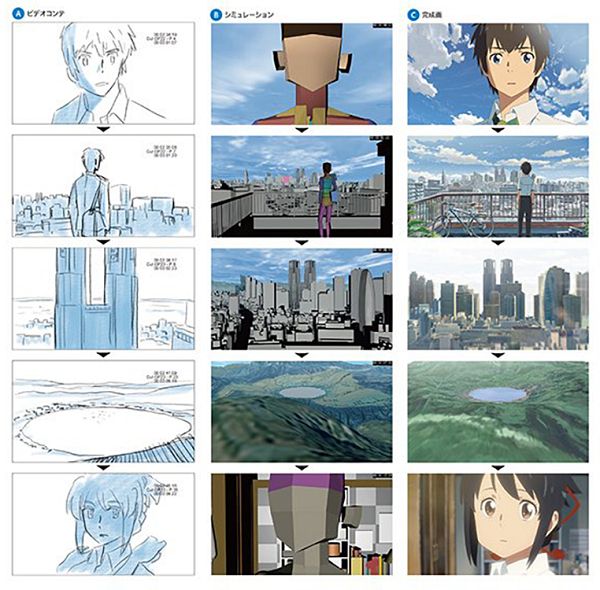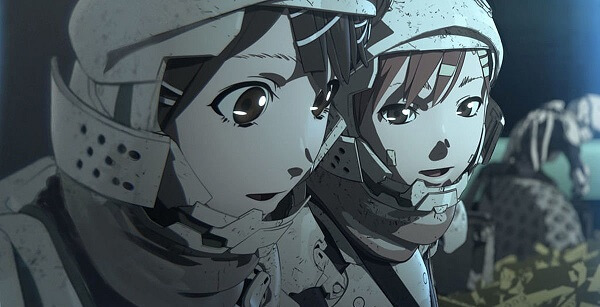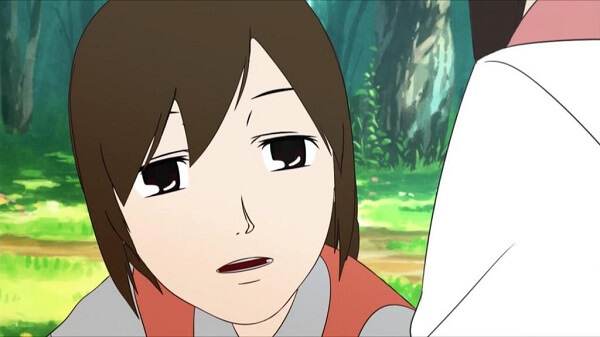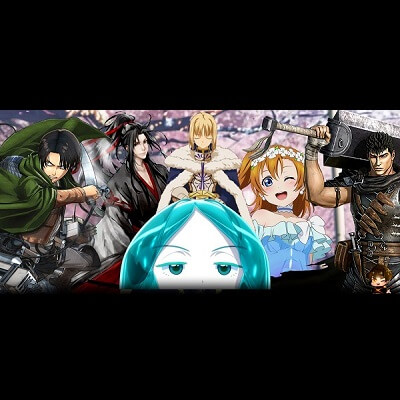The widespread use of social media has had a significant impact on media criticism, whether it’s well-intentioned, harmless fun or truly toxic attacks. I can’t condemn enough the alarmingly high number of comments calling for the staff and studios involved to be killed, but I don’t see the harm in viral gifs showcasing the series’ poor craft.
There is no such thing as objectively funny, but this could come close. I’ve always found a certain kind of wonkiness that comes from bad 3D drafting by artists who tried their hardest. It’s easy to see how upsetting this project could be if you’re a fan of Berserk and wanted a spectacular animated adaptation of the series. It’s understandable to lash out at the obvious adversary – they dared to turn Berserk into a computer-generated production! – but this attitude frequently results in viewers tilting at computer-generated windmills.(3DCG in Anime)
Here’s the thing: anime fans are more certain that 3DCG in anime is bad than they are aware of what 3DCG in anime entails. This isn’t to say they’re wrong, but there are a lot of misunderstandings and half-truths floating around. Despite the fact that this can be attributed to a general lack of knowledge about foreign animation production exacerbated by the language barrier, don’t assume that Japanese fans are much more informed.
While people often lump all of their efforts together as 3D work, CG director and composite artist Norihiro Tomiita recently stated that the truth is that their job entails a variety of techniques and aspects that go beyond what fans usually perceive – including production crutches that you’d never notice because they’re not actually part of the finished product. Even if you’re allergic to the concept of computer-generated animation, a basic understanding of how it works should be helpful. You should be aware of your adversary and such.

Rather than looking at how 3DCG is made, let’s look at the motivations that lead to it; as important as the how is, I believe the most fundamental misunderstandings are related to the why. Let’s also ignore some artists’ perfectly valid desire to go 3D and treat it as an outlier within anime’s natural 2D state, because that’s how the vocal critics feel. Because most people believe there is a strict, invariable link between how much money was spent on a TV show and how nice it looks, the answer is simple: Because 3DCG is less expensive than 2D animation, anime must use it.
However, as much as anime loves to be as (in)humane as possible, this isn’t the case here. Many industry members, including Toei’s Takuya Minezawa, have stated that there is no link between the use of 3DCG and cost reduction, and that the opposite is true.
This is understandable when you consider that, while 2D animators are almost entirely relegated to the abysmal pay of anime, 3D artists have a wider range of options. This industry’s work is still on the low end of their capabilities, but it is unquestionably more valuable than 2D art. To give you an idea, according to JANiCA’s data, the average 3DCG creator earned 3 times more than an inbetweener and 30% more than key animators (on par with standard episode directors), all while doing less work.
So what’s the big deal? It’s critical to recognize that the first keyword here is feasibility. With enough time and resources, anything can be drawn. Many things are simply not possible in a limited space like TV anime if you want to maintain a certain level of quality.
As schedules worsen and the talent pool shrinks, creators are frequently forced to choose between limiting their ideas through static execution or sticking to their ambition by relying on tools that many viewers dislike.
There is no perfect solution once you reach that point. Those who choose the latter, whether because they believe it will lead to more effective scenes in the end or simply out of creative curiosity, will benefit from CGi’s inherent characteristics. I’ve written extensively about the impact that well-executed 3D backgrounds have on action material, allowing for ambitious setpieces without the enormously difficult task of correcting constantly changing perspectives.
It’s not just high-octane content that benefits from digital advancements; even something as mundane as trying to fill a school can benefit. If hyperstylized cutouts as passersby aren’t appropriate for your overall aesthetic, you can either fill your world with still drawings or use CG’s mass-production ease to create moving crowds. As viewers of Tsuki ga Kirei can attest, this can make your setting more organic…or it can completely backfire in an attempt to create immersion.
In any case, this brings us to the second major point: specificity. There are some tasks that are better suited to CGi craft, particularly those that involve its inherent ability to maintain its form while in motion, such as moving environments, constant motion routines like dancing, large structures, and creatures with solid appearances… Even robots are, by nature, a very fitting choice, as much as it pains me to say this as a mecha fan. It’s difficult to deny that the results are satisfying, even if they aren’t always.

Of course, this is true in both directions. There are some aspects where a hand drawn approach is intrinsically superior, at least for the time being. The inert 3D models continue to lag behind Japan’s mature (albeit limited, particularly on television) approach to 2D character expression, resulting in clumsy acting on the few projects that do render people in 3D all of the time.
Polygon Pictures has years of experience and proprietary software that allows them to render worlds bathed in detailed lighting that puts just about any anime to shame, but they still struggle to mimic basic anime-style character acting. And, despite the fact that CGi is portrayed as a more efficient toolset, this isn’t always the case. Have you ever wondered why Toei’s ostensibly fully 3DCG series KADO – The Right Answer contains some hand-drawn background characters?
The truth is that we’re still at a point where drawing a few quick mobs is easier than modeling someone who won’t be seen again in the show, so even a project like this can choose to save resources in this case where 2D is more cost-effective. Each tool has a specific function!
I’ve mentioned a few examples of 3DCG in anime, but those are just the obvious ones. Much of anime’s 3D work, especially in its early stages, serves as a supporting tool. Each shot in anime is created by storyboarders, but the animator in charge of the cut is responsible for turning those ideas into a fully functional layout.
Construction of the scenes necessitates a great deal of positional awareness and understanding of perspective, so having 3D models of the surroundings is a huge help. New Game! was a show that was almost entirely set in a game development studio, with a strong emphasis on the workplace.
Also Read: Catherine Torres, Tammy Slaton
Many 3D layouts were created to assist the 2D animators in giving it the best treatment possible. And it doesn’t stop there, because these types of support tasks are always changing. The historical hit film your name. took the concept of 3D layouts a step further, running a 3D simulation based on the video storyboards to get a general sense of each scene before beginning the animation process. You may be clamoring for the abolition of CG departments as a fan of hand-drawn animation, but the 2D artists you admire would be concerned.
But who exactly works in those CG departments? The people in charge of 3D in anime can be divided into three categories. The technically strongest material comes from a small number of major studios that aren’t affiliated with the industry and often deal with international work across multiple media. Polygon Pictures, for example, stands out in this category of companies that can easily produce fully 3D projects.
That is a feat that the larger anime-centric CGi studios can achieve; if you keep up with industry news, you may recognize names like Sanzigen and Orange as recurring animation (co)producers. Most of their peers, on the other hand, aren’t quite as large, and if you continue down that path, you’ll eventually reach the final group: 3D departments within 2D studios.
These, unlike the first two, concentrate almost entirely on minor details within traditionally produced shows. Most anime studios don’t even hire such people in the first place.
Even a massive company like Toei Animation has a small – but highly skilled – CG department, which is why their big 3D projects rely on companies like Graphinica (Expelled from Paradise) and Marza Animation Planet for manpower (Harlock: Space Pirate).
All of these factors have a significant impact on the 3D creators’ proficiency and artistic vision, which is why it’s always a good idea to find out who is in charge of the CGi in a project. You’ll be wrong more often than not if you just assume it’s the anime studio that created the show.
You should now have a basic understanding of how anime works in 3D, which may help to ease your reservations about its use. After all, many people aren’t fundamentally opposed to CG; they only complain because it’s bad, not because it exists. Which is fair, but you eventually come to the point where you have to wonder what good anime 3DCG is in the first place – and even the artists disagree on this.
After a certain level of technical proficiency, it’s all about the creators’ vision, which may vary from project to project. Norihiro Tomiita, the aforementioned 3D director, stated that his goal as a 3D director is to hide the fact that CG elements exist, and that he considers it a victory when a fan is surprised that he worked on a particular scene.
He’s spent his entire career working for a 2D animation powerhouse like Kyoto Animation, which is why, despite being a CG artist, he’s evolved into a creator who wants to help traditional animators. Similar attitudes can be found, as strange as it may sound, even in studios entirely dedicated to 3D craft.

There is a deep ingrained sense of shame in the industry because these creators aren’t blissfully unaware of the general feelings of anime fans towards its CGi. Their desire to look like regular anime no matter what can backfire, as it’s at the root of divisive techniques like limited CG animation: the idea of dropping frames to mimic the timing of traditional 2D anime…which only serves to make 3D character motion more awkward unless directly supervised by experienced traditional animators.
On the other hand, studios like GOONEYS, whose textured and full work in Show By Rock contrasted sharply with the rest of the series’ standard stylized aesthetic. They didn’t have to worry about cohesion because their segments depicted a different world, and their technical prowess refutes the notion that 3DCG is best when it’s invisible.
Others, like the mechanical experts at Studio Orange, choose a middle ground: they’re unashamedly volumetric when it comes to the robots they excel at, always taking advantage of the dynamic camerawork enabled by the 3D backgrounds, but they’re willing to leave the flat effects to the 2D animators. These various crews all have distinct personalities, but they are not constrained by them. If the vision of a new title requires it, they may all change their ways. Finally, there are as many approaches to anime projects as there are anime projects.
Neither the fans nor the creators themselves will be able to agree on the best approach. Personally, I don’t believe there is a universally acceptable approach to 3D-in-2D integration, or even a preferred fully 3D aesthetic that all such anime should follow.
However, if fans begin to pay attention to the manufacturing process and the motivations of the creators, we might be able to have some interesting debates about this. That sounds better than cursing Shin Itagaki’s entire family because the Berserk series he’s in charge of looks ridiculous.
Checkout Terri Harper, Sabrina Haskett , Yasmin Vossoughian , Terry Dubrow
